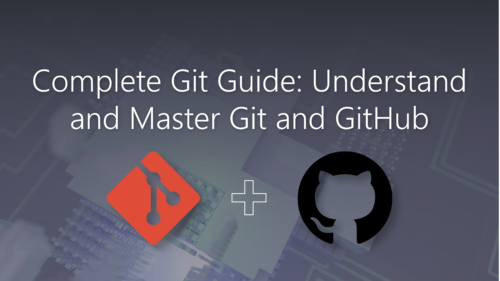Complete with practical activities, this comprehensive Git and GitHub guide will help you understand how Git works. You’ll learn how to use Git features efficiently and fix issues in your development workflow. Starting with the internal structure of a Git repository, this course will take you through the four types of Git objects: blobs, trees, commits, and annotated tags. You’ll understand how each object has a unique SHA-1 hash and how all objects are stored in folders, files are stored in blobs, and filenames are stored in other Git objects called trees. You’ll even get to grips with creating new Git objects without using git commit and git add. Once you’ve created Git objects in the Git repository, you will add it to the staging area and working directory. By the end of this course, you’ll have become a Git and GitHub expert and be able to perform basic and advanced Git tasks seamlessly.
Complete Git Guide: Understand and Master Git and GitHub
Duration
21h 50m
Students
0
Level
Beginner
Last Updated
October 29, 2024

Overview
- 19 Sections
- 247 Lessons
- 21h 50m Duration
Introduction to Git and GitHub
3 Lessons
Installation of Git and Configuration of the Shell
6 Lessons
Basic Shell Commands
4 Lessons
How Git Works Under the Hood
29 Lessons
Basic Git Operations
14 Lessons
Git Branches and HEAD
16 Lessons
Cloning, Exploring, and Modifying Public Repositories
10 Lessons
Merging Branches
15 Lessons
GitHub and Remote Repositories
10 Lessons
Git Push, Fetch, and Pull
22 Lessons
Pull Requests
22 Lessons
Forks and Contribution to the Public Repositories
13 Lessons
Git Tags
9 Lessons
Rebasing
12 Lessons
Ignoring Files in Git
8 Lessons
Detached HEAD
4 Lessons
Advanced Git
18 Lessons
GitHub Pages
9 Lessons
GitHub Hooks
23 Lessons
Free
Course Includes
- Use Git in terminals as well as GUIs such as GitHub Desktop and Visual Studio Code
- Explore different Git objects, including blobs, trees, and annotated tags
- Create local and remote Git repositories
- Get to grips with rebasing and merging branches
- Discover what a pull request is and how to create it in GitHub
- Learn advanced Git operations such as squashing, amending, and reverting commits
- Contribute to public repositories using the forking technique


